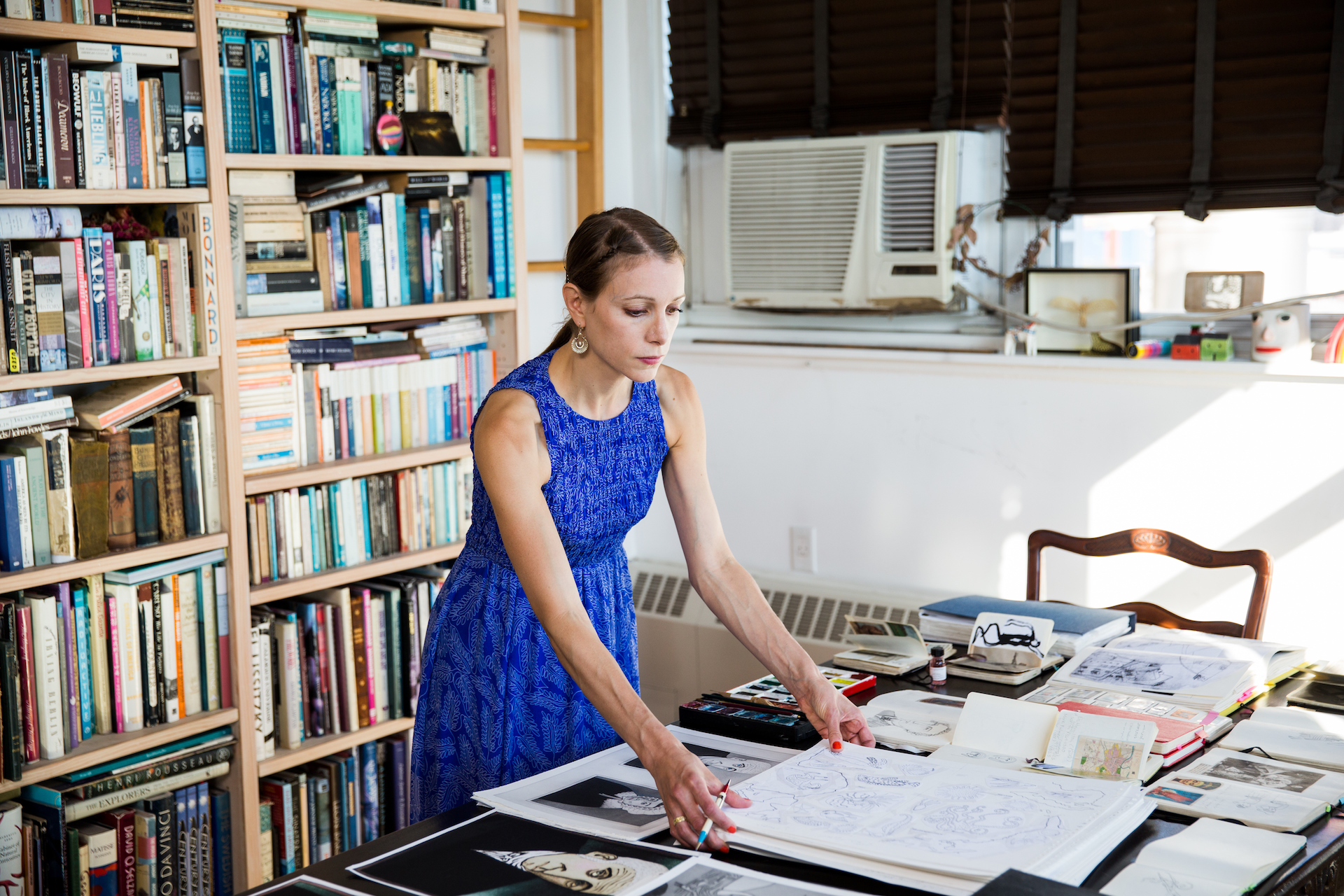Lauren Redniss, an Assistant Professor of Illustration at Parsons who was recently awarded a 2016 MacArthur fellowship grant for her work in illustration, said that her work primarily takes inspiration from nature, among other things.
As both a professor and an author, Redniss, 42, sees her creativity thriving by teaching here at The New School, as new ideas spring up within her while teaching her students in the classroom.
She currently oversees two senior thesis classes in the Illustration program at Parsons, guiding her senior students on how to progress as creative thinkers. “I try to emphasize big ideas to my students,” Redniss said in an interview with the New School Free Press. “One is self-education, so that they are always evolving and growing as artists and as creative thinkers beyond school.”
The professor also stresses the importance of finding a creative community for her students to be a part of when they eventually graduate.
“We’re delighted to have Lauren Redniss on the Illustration faculty over the past eight years,” said Ben Katchor, program director for Illustration at Parsons. “Her MacArthur Foundation fellowship helps validate the study and creation of text-image on a university level. Her students are inspired by her enthusiasm and work.”
Redniss told the NSFP that she is heavily influenced by medieval art, as well as religious paintings and scrimshaw. “Where there’s kind of an encoded language, a symbolic [language] that you can read in the imagery,” Redniss told the NSFP, explaining the inspiration of medieval art to her. In her work, She uses vibrant colors and illustrations accompanied with text to tell stories about nature and the sciences in her books.
Growing up, her father, who she described as a self-taught natural historian, played an important role in teaching her about nature. In her last book, “Thunder & Lightning: Weather Past, Present, and Future,” Redniss combines her illustration with writing about the weather and how it can affect lives, with both minuscule and dangerous factors being explored in her book. She brings the book to life by having colorful pages and illustrations that represent weather and its effects on nature.
Redniss said the MacArthur grant she’s received is helping her think openly in terms of her work. “It’s really exciting because it frees me to think big in ways that may not have been possible before, or may just be more difficult to imagine.”
She said it opens up a new opportunity to explore different mediums such as video. Ideas that she initially put aside are starting to pop up again, and she is now able to be “thinking in completely new directions and new scales”, as Redniss said.
“Redniss undertakes archival research, interviews, and reportage, and field expeditions to inform every aspect of a book’s creation, from its text to its format and page layout, to the design of the typeface, to the printing and drawing techniques used for the artwork,” the MacArthur Foundation said on its website.
The MacArthur foundation awards fellowship grants to those the foundation sees as progressive thinkers in their field, by awarding a no-strings-attached grant that provides them with more resources in advancing their work. Along with Redniss, other grant recipients from this year include financial analysts, historians, composers, and scientists, to name a few. These types of grants are not able to be applied for; nominations are received by anonymous outside nominators chosen by the foundation’s selection committee and are reviewed before the list of recipients is finalized.
Photo: John D. & Catherine T. MacArthur Foundation







